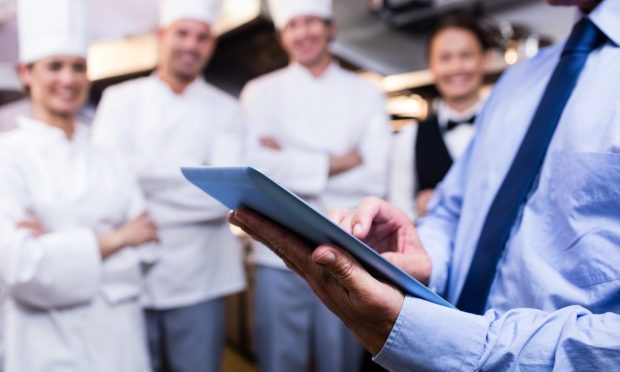ResTech Providers Shift Focus from Consumers’ Needs to Restaurants’

In 2020, much of the focus of restaurant technology businesses was on offering restaurants ways to maintain their customers in the face of pandemic-related challenges. Online ordering tools became more user-friendly, and restaurants opened up channels such as curbside pickup and delivery to offer consumers as many options as possible. Now, with consumers having incorporated digital ordering into their routines, technology providers can shift their focus to directly providing value for their actual customers, the restaurants themselves.
On Thursday (Oct. 21), B2B software as a service (SaaS) company Olo announced the acquisition of Ann Arbor-based customer intelligence platform Wisely for $187 million. The move suggests a turn on Olo’s part from its consumer-facing products such as digital ordering tools towards broadening its offering of internal tools for restaurants.
“As we look to the future of digital entirety for restaurants, tools that help brands harness customer data and turn it into applicable insights will be essential for them to better serve guests and manage the restaurant enterprise as a whole,” Noah Glass, founder and CEO of Olo, said in a statement. “Since partnering with Wisely, we have seen clear synergies between the two platforms and a close cultural alignment of putting restaurants first. We both succeed when our restaurant brands succeed, and there are clear areas of opportunity to provide intelligent products to better serve them.”
The shift makes sense given that, while consumers’ loyalty cannot be taken for granted, restaurants certainly do not have to work as hard to drive digital adoption as they have in previous years — consumers are already on board. PYMNTS research highlighted in the How We Eat Playbook, created in collaboration with Carat, from Fiserv, finds that consumers now are 31 percent more likely to buy meals for delivery or pickup than they are to dine on-site. Specifically, 67 percent of restaurant customers opt to order their food for either pickup or delivery, compared to 51 percent who report dining on-site.
See also: Up for Grabs: Restaurants and Grocers See Path to Picking up 200 Million New Customers
Noting the opportunity that this widespread adoption creates for restaurants to turn their focus towards their own needs, restaurant technology providers across the industry are seeking out new ways to provide value for their restaurants, offering solutions to streamline restaurants’ internal processes.
Yelp, for one, recently launched Yelp Guest Manager, which consolidates front-of-house tools into a single product. Merchant point-of-sale (POS) commerce platform Lightspeed recently announced that it is rolling out a new restaurant tool with analytics, payments and inventory management for a one-stop, unified solution.
Read more: With ‘Guest Manager,’ Yelp Joins Tech Providers Aiming to Be Restaurants’ One-Stop Shop
See also: Lightspeed Intros Integrated Hospitality, POS Platform
“One of the big common questions [from restaurants] right now is, ‘What should I be doing for my technology platform for the future?’” Andrew Robbins, co-founder and CEO at restaurant Software-as-a-Service (SaaS) company Paytronix, told Karen Webster in an interview. “They’re saying, ‘I was nimble. I had to adapt last year, and I put in a lot of cool things. Now that I know tech is really important, do I have the right platform to grow on in the future?’… People want to go fast, but they want to know that the base is something to build on.”
Related news: Paytronix CEO: Restaurants Are Reopening But Digital Ordering Is Here To Stay
